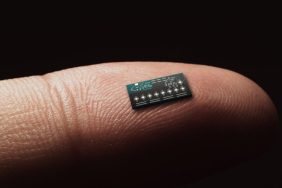‘San Junipero’ and Second Life

Black Mirror is predominantly known for providing a rather bleak look at our fascination with technology, making ‘San Junipero’ a thoroughly unexpected deviation from the norm. Positing a world in which death is almost inconsequential as a result of humans being able to upload their minds to the cloud, it reveals a fantasy world in which the elderly can relive their youth by way of the virtual city of San Junipero, a fantasy world in which the era changes on a weekly basis and no one looks over the age of 25.
The virtual home which the ‘San Junipero’ residents inhabit is reminiscent of Second Life, a once-mighty massively multiplayer online game in which players could create an avatar, socialize with others and generally live out an alternate existence in this fictional reality. While Second Life eventually grew beyond anything even reasonably similar to our own world, with players able to decorate their homes in whatever surrealist way they saw fit along with customizing their avatar into various abominations, for the period of time it was at its most popular it became a way for people to form very real relationships. At the height of its success Second Life was a cause of concern for many who felt that it was having a damaging impact upon its users, with a number of documentaries delving into the apparent addictions of those who played it religiously. It’s now far less topical, though it still enjoys a wide player base.

As far as the concept of a cloud-based brain in concerned, one millionaire is already working on technology in order to make this seemingly ludicrous idea a reality. Russian internet entrepreneur Dmitry Itskov believes that within the next 30 years, he will be able to make people “live forever” by way of making it possible to upload a human brain to a computer. According to an article by the BBC posted earlier this year, Itskov is investigating some of his fortune into developing technology that will help separate a human’s brain from their body, allowing them to continue living after the contents of the brain has been successfully transformed into a data. While this transferal wouldn’t wind up with the individual continuing to somehow live inside the internet, as is the case with ‘San Junipero,’ it would allow them to continue living after death, with Itskov’s eventual goal being to have them adopt a brand new body. It’s definitely a far-fetched concept, but this idea is the closest thing we have to replicating Black Mirror‘s vision — even if our own world is a considerably less attractive afterlife than San Junipero.
‘Men Against Fire’ and Augmented Reality

Whereas ‘Playtest’ pulled a bait-and-switch by pretending its story featured augmented reality before revealing that almost the entire episode had taken place in virtual reality, ‘Men Against Fire’ firmly focuses upon AR. Following soldier Stripe as he takes part in the army’s continued efforts to rid the UK of Roaches, a seemingly sub-human species that is purportedly a violent threat to the planet, after Stripe’s “army chip” is damaged during a mission he discovers that said chip was actually causing him to a view an augmented reality, with the “Roaches” actually being completely normal humans albeit with purported “defections” that have caused them to be exiled from society. This includes anything from being genetically predisposed to contract certain illnesses, or having a history of crime.
This episode doesn’t really draw any reasonable parallels with modern technology, with it instead serving as a pretty basic allegory for racism. By making the humans that the government wishes to dispose of look more alien, it is rightly believed that the army will be more will be more willing to shoot them down without question; it’s not exactly difficult to work out the inspirations behind this particular episode. In terms of the tech utilized in it, we have nothing that resembles the permanent chip surgically implanted into the soldiers, though various AR headsets do exist such as the aforementioned Microsoft HoloLens and Google Glass.
The most direct comparison would be an idea dreamed up by US defense agency DARPA, which is toying with a “cortical modem” that would see a tiny device being implanted into users in order to give them a permanent heads-up displays, or HUDs. Theoretically the cortical modem could also be used to cure neurological disorders, though obviously this tech is still a long way away from becoming a reality. Google is also exploring a similar field, with a patent released in 2016 revealing that the search engine giant has claimed ownership of an idea in which eye implants could be fitted on humans, offering them AR vision along with delivering data directly to their smartphones in order to be utilized by their optometrists.
‘Hated in the Nation’ and Autonomous Bee Drones

‘Hated in the Nation’ is set in a version of the UK in which bees have become extinct, with the government having resorted to deploying autonomous bee drones in order to continue the pollination process. However, things swiftly turn sour after the police begin investigating a series of mysteriously similar deaths, with it eventually being made clear that the bee drones are responsible.
Detectives Karine Parke and Chloe “Blue” Perrine discover that the bee drones are being used as part of a killing spree solicited by Twitter users, in which posting a tweet featuring the hashtag “#DeathTo” alongside someone’s name effectively places a target on their head, with the bees seeking out the individuals who have generated the most tweets under this hashtag before killing them. The episode explores the disassociation many feel when taking part in online witch hunts, with so many of us happily feeding into social media controversies without considering the impact it could have on those we’re targeting. Although ‘Hated in the Nation’ depicts more grave consequences for those who find themselves the subject of the internet’s ire, there has been an abundance of similarly vitriolic online campaigns embarked upon by the hive mind that the episode’s bees represent. Eventually the episode turns the focus upon those complicit in the murders rather than the victims, with the police unwittingly engaging a protocol that leads to the bees killing those who have tweeted using the hashtag.
But just how close are we to replicating the autonomous bee drones depicted in Black Mirror season 3’s finale? Well, Harvard University developers have been working on so-called “RoboBees” since 2013, which work to pollinate flowers in tandem with one another. The technology was developed as a result of the increasing lack of honey bees, who continue to die at an alarming rate and throw the Earth’s food production into doubt as a result. Much like the drones featured in ‘Hated in the Nation,’ it is hoped that a technology similar to the RoboBees will one day be able to ensure that pollination can continue in the event of the honey bee becoming extinct.
In an article for the Scientific American, project lead and engineering professor Robert Wood wrote: “RoboBees will work best when employed as swarms of thousands of individuals, coordinating their actions without relying on a single leader. The hive must be resilient enough so that the group can complete its objectives even if many bees fail.” This concept is similar to the action of the bee drones in Black Mirror, with the insects working together in order to pollinate and to even create their own hives.
Although the RoboBees aren’t yet autonomous, mechanical engineer Kevin Ma told Business Insider that this was the eventual goal, saying: “We’ve been continuing on the path to getting the robot to be completely autonomous, meaning it flies without being tethered and without the need for anyone to drive it. We’ve been building a larger version of the robot so that it can can carry the battery, electronic centers, and all the other things necessary for autonomous flight.” When Harvard last discussed the RoboBee, it was still connected to a power source and was manually operated. However, with drone technology continuing to increase at a rapid pace, its developers have stated that with continued government funding the device could be up and running “in 10 to 15 years.” Hopefully they won’t be as prone to killing sprees as the ones depicted in Black Mirror.








